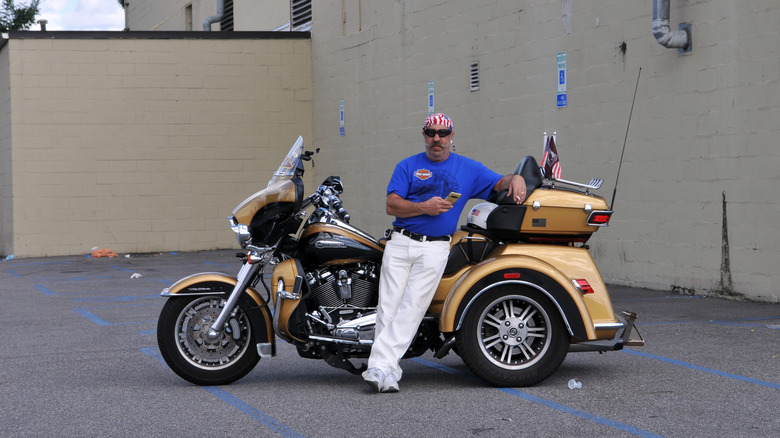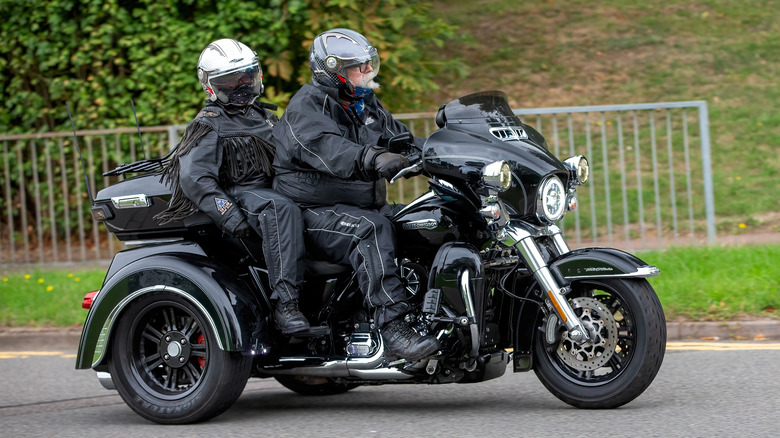Are Trikes Safer Than Conventional Motorcycles?
Trikes aren't as popular as their two-wheeled siblings, look too bulky to ride, and have way more parts than a bike, most of which might sound like a huge money pit. But what if we told you that riding these three-wheeled beauties is actually safer than riding a conventional motorcycle? Given the steady surge in these motorcycles over the past few years, it's only natural that many vehicle enthusiasts would wonder whether riding them is safer than riding a two-wheeler.
It's no secret that one of the most significant downsides of riding a conventional motorcycle is the danger from the fact that two-wheeled motorcycles are just that — two-wheeled — which makes them prone to wobbling, shaking, rolling over, and everything in between. Well, that's where three-wheeled motorcycles or trikes come in, given that they offer better stability and are easier to handle in areas like corners or when stopping. Let's discuss.
Stability is everything to a biker
Ask any biker what one of the most important features of a motorcycle is, and they'll probably mention its stability. This aspect determines the entire riding experience and whether you'll reach your destination safely, end up in the ER, or worse. Increased stability generally results in a better overall riding experience, which is why some companies, such as Kawasaki with its renowned Ninja line, include things like Anti-lock Braking System (ABS) in some of their motorcycle packages.
With trikes, the three wheels provide a broader base, improving the vehicle's stability. This means you won't have to work so hard to get the bike to turn at corners and curves by leaning or to keep it from tipping over at a stop. Three wheels also improve overall balance by distributing weight across three points instead of two, as with conventional motorcycles. This means there will be less stress on your body as you try to keep the trike upright. All these facets shine when riding in bad weather or on slippery roads, where traction and control are paramount.
Trikes have an easier to spot visual profile
It's also crucial to mention just how much trikes stand out on the road, with that very visibility being the difference between getting home safely and ending up in the ER. Let's take the relatively premium Harley-Davidson Street Glide and Tri Glide Ultra, for example. The Street Glide measures 101.97 inches lengthwise by 38.58 inches widthwise, while the Tri Glide Ultra comes in at 105.12 inches by 54.72 inches. While the trike is almost the same length as the Street Glide, it really shines in width, offering a better visual profile. That shape means improved visibility for other road users who might not catch the Street Glide in time but will see the Tri Glide.
When it comes to protection, both motorcycle types don't offer much, as they leave the biker open all around. As such, while a trike offers lower risk than a conventional motorcycle, riding it still demands the same care and attention usually employed while riding a two-wheel motorcycle. You will need riding gear, such as a riding jacket, boots, gloves, and a helmet (perhaps one of those popular German-style helmets).


